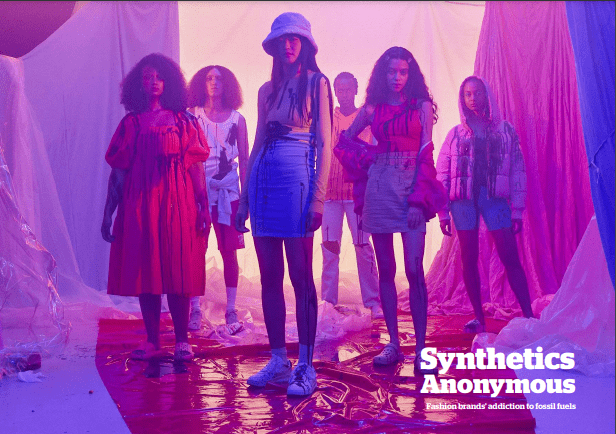Fashion industry still addicted to fossil fuels – Innovation Origins

While the effects of climate change are becoming increasingly apparent, the fashion industry has only grown even more addicted to synthetic fibers over the past five years. That is according to the report ‘Synthetics Anonymous 2.0: Fashion’s persistent plastic problem’ recently published by the research agency Changing Markets. Fashion giant H&M agrees with this statement. “The industry must make a radical shift to more sustainable production,” a spokesperson said.
But, in practice, this has turned out to be far from reality. The focus of the sustainability report is on the use of fibers that contain fossil fuels as raw materials. Currently, two-thirds of all textiles are made up of synthetic fibers. Most synthetics are not recyclable and are often used in complex textile blends that make circularity impossible.
Why we write on this topic:
The fashion industry is one of the most polluting industries in the world, yet we are seeing more and more sustainable clothing lines being introduced. How well are they really doing in terms of sustainability?
Poor transparency
As such, fashion companies are heavily reliant on fossil fuels, such as oil, to make their clothing. Changing Markets finds that numerous brands are not transparent about their synthetic oil supply chains. A survey was sent to 55 global fashion brands. A total of 31 companies responded to the survey. The remaining 22 brands provided scant or no transparency about the use and sourcing of synthetic fibers and wound up in the Red Zone category.
Of the 31 companies that did respond, 27 did not provide sufficient details about their synthetic textile suppliers. These included sports brand Puma and luxury brands Burberry, Gucci and Balenciaga.
Textile-to-textile technology
Moreover, not many companies are investing in textile recycling technologies. This is complex because textiles often consist of two or more fiber materials, such as cotton and polyester. The combination of different fibers gives textiles more versatile applications. The problem with blended textiles is that they are difficult to separate during recycling.
With a figure of €3.7 million, H&M Group invested the most in textile-to-textile technology in 2021. That money went to recycling companies such as Ambercycle, Infinited Fiber and Re:newcell.
A spokesperson for H&M Group notified Innovation Origins that it plans to use only recycled or other sustainable materials for its products by the year 2030. “Twenty percent of the material we use is polyester, three-quarters of which is recycled polyester. We agree with the report – the industry does need to make a radical shift to using more sustainable materials and practices. This will of course call for greater supply chain transparency throughout the value chain.”
H&M is therefore working with the Dutch company TextileGenesis for this reason. This company develops software for tracking sustainable materials. Fashion brands and textile producers are able to map out the origin of their textiles and make the supply chain more transparent this way.
These efforts towards ensuring transparency are noticeable because H&M Group did not divulge the volume of synthetic materials it used in 2021. Consequently, this shows precisely why “the company is reluctant to be transparent about the volume of its procurement of these materials,” according to the report.
Sustainability strategy dependent on bottles
A total of 45 out of 55 brands (81 percent) have set targets to increase their recycled synthetics volumes, most notably polyester.
This is the case for sports brand Puma, among others. Currently, 43 percent of their clothing is made of recycled polyester; by 2025 this figure should be 75 percent. The recycled polyester comes primarily from PET bottles, according to Robert Bartunek, head of corporate communications at Puma. “We have also launched a circularity project in addition to this – PUMA RE:JERSEY. We are experimenting with recycling garments here.”
Fraunholcz: ‘With mechanical recycling alone, we won’t meet the EU directives’ – Innovation Origins
Solvent-based recycling, alongside mechanical recycling, should take on a larger role, according to entrepreneur Norbert Fraunholcz.
‘False solution’
The report is critical of PET bottle recycling, and calls it a “false solution.” It makes the industry dependent on waste residuals from other industries, fashion companies do not recycle waste from their own sector when in fact this is desperately needed. “Brands cover up their use of synthetic fibers under the guise of pledges to increase the proportion of ‘sustainable’ materials such as polyester and nylon,” the report states.
Fortunately, there is also one company that stands head and shoulders above the rest. Fashion brand Reformation was the only one to be classified as a Frontrunner. The company aims to reduce its use of synthetic fabrics to one percent by 2025, is transparent about its suppliers and is investing in textile recycling technologies.
Copyright :

